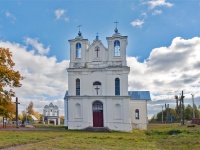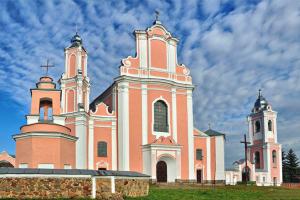History of the development
In the XV century the estate on the territory of the modern village was in the possession of various gentry families. In 1424, the commandant of Vilnius Peter Gedygoldavich built here the Church of the Visitation of the Blessed Virgin Mary. In 1641 a stone church was built on the site of a wooden church. In 1780-1870 metallurgical plant worked in Vishnevo. A blast furnace was built here for the first time in Belarus.
As a result of the second partition of the Polish-Lithuanian Commonwealth in 1793, Vishnevo became part of the Russian Empire. In the Patriotic War of 1812, M. B. Barclay de Tolly retreated eastwards through Vishnevo with the Russian army. In 1864, the Russian authorities built a church in Vishnevo, opened a parochial school and a public school. In World War I in 1915-1918, the German defense line passed through Vishnevo.
January 1, 1919 Vishnevo became part of the BSSR. According to the Riga Peace Treaty of 1921, the village became part of the interwar Polish Republic. In 1939, Vishnevo returned to the BSSR. During the Second World War in the period from June 1941 to July 6, 1944 Vishnevo was under German occupation.
Tourism potential
The main attraction of the village is Church of the Annunciation of the Blessed Virgin Mary, which was built in the middle of the XVII century. Another equally famous temple is Church of St. Kozma and Demyana, which was built in 1865 on the left bank of the river Olshanka of brick and rubble stone.



